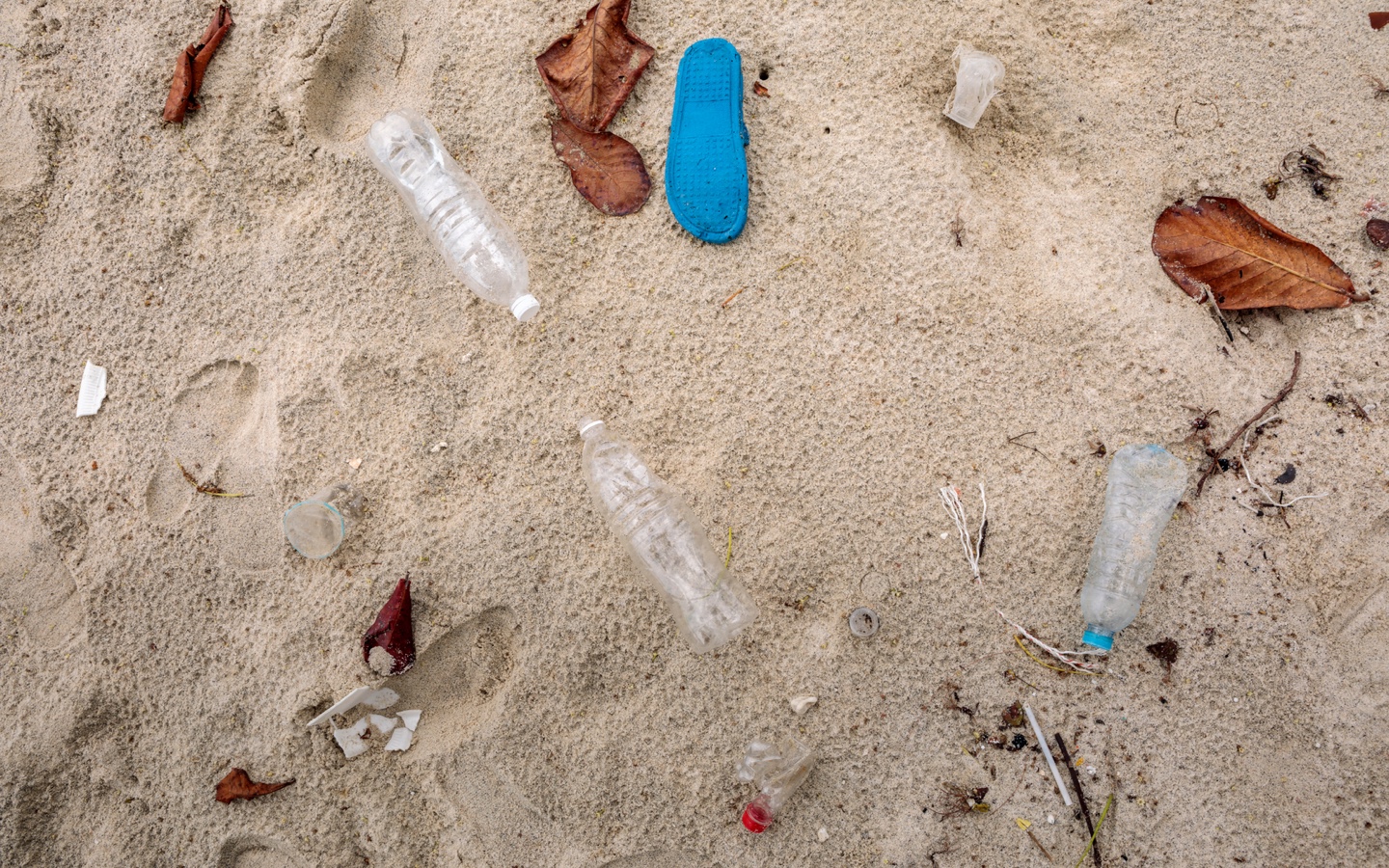Plastics are ubiquitous — filling our oceans, air, and our bodies. But scientists are working on some plastic pollution solutions to help clean it up.
Plastic is everywhere. You can find it in appliances, furniture, packaging, and nearly everything else we consume. Introduced around 1950, plastics helped to modernize society with life-saving medical devices, space travel, lightweight cars, and helmets. But plastic, a byproduct of fossil fuels, never really decomposes, making plastic pollution one of the most pressing environmental issues of our time.
Each year, an estimated 8 million tons of plastic waste end up in the ocean. In the last two decades, marine plastics have increased a hundredfold. This waste breaks down into microplastics that end up in our drinking water and food. And millions of animals are killed by plastics each year, mostly due to entanglement or starvation. All in all, plastics are pretty terrible for the planet — so a few innovative groups are working to eliminate plastic waste through creative methods. While there’s a lot of promise in these solutions to clean up our plastic mess, it’s important to keep in mind that they won’t solve anything if we don’t limit the number of plastics entering our environment in the first place.
Read more: We Need to End Plastics Now
In 2016, scientists discovered a type of bacteria that could decompose plastic. It could only “eat” PET, which is a particular plastic that’s often found in water bottles, and the process wasn’t incredibly fast. Still, it was an eye-opening finding: Evolution had created a natural way to break down a material we only recently created.
Today, scientists are working on ways to put these bacteria to good use. The large-scale commercial reliance on microorganisms is still years away, they say, and we wouldn’t want to release them into the environment without monitoring. But the bacteria have been spotted all over the world, in places like Pakistan, Texas, and Germany. And a French company called Carbios is partnering with big-name manufacturers like PepsiCo and Nestle to study these naturally occurring bacteria and speed up the decomposition process.
“Without new technologies, it’s impossible for them to meet their goals. It’s just impossible,” Martin Stephan, deputy CEO of Carbios, told Forbes.
If we can’t sail around and pick up plastics ourselves, maybe we can enlist the help of a crew of robots. That’s where FRED comes in: He’s a floating robot from Clear Blue Sea that eliminates debris, like plastics, in oceans. FRED (which stands for “floating robot eliminating debris”) runs on solar power and collects plastics (up to five meters long!) using a series of booms, belts, and bins. When his bins get full, the items are offloaded and processed for recycling.
And in Dubai and South Africa, you’ll find another form of robot: Waste Sharks, or plastic collectors that swim through enclosed water, operated by remote controls. The Sharks can scan and monitor the condition of the water, all while cleaning up plastics and microplastics. Both robots contain alert systems to keep marine life at a safe distance.
“We wouldn’t pick up any live animals, FREDs move really slowly to make sure animals move out of the way,” Kim-Ashleigh Mostert-Freiberg, a business manager at Clear Blue Sea, told CBS.
Read more: How Ocean-Bound Plastic Bottles Become Useful Stuff
Microplastics are especially troubling for human health, due, in part, to the chemicals that are used to treat plastics during production — and they’re tough to remove from the water and the air because they’re so small. But in 2016, scientists created a new type of nanotechnology made up of tiny coils — smaller than the hairs on your head — that create chemical reactions to break down microplastics in the ocean. After the plastic is broken down, all that’s left is carbon dioxide and water. And while the technology is still in its infancy, the hope is that, eventually, the coils could be added to any water that’s polluted with microplastics. In the initial study, the coils removed 50 percent of microplastics in just eight hours.
If we’re truly going to tackle the plastic crisis, we need more information about the flow of plastics in the water. Where are they coming from? Where are they going?
Drones and satellites have made high-resolution imaging possible, and scientists in Japan are using those tools to track plastic deposits at sea. In a new study, they note that plastic can often float into certain areas over and over again. Their new mapping system would identify “hotspots” of plastic emissions, which could help local municipalities implement strategies for picking up the plastic before too much accumulates. It might even tell us more about where the plastic primarily comes from, so we can cut the flow off at the source.

Read more: The Nonprofit Reducing Plastic Waste One Community at a Time
We still have miles to go when it comes to reducing plastics, but you can join the cause by changing your own habits. Consider limiting single-use plastics on a day-to-day basis. (An awesome place to start: Pack reusable straws and bring a container for leftover restaurant food instead of taking a plastic one.) Vote for local officials who care about changing our behavior around plastics and holding corporate plastic polluters accountable, and consider volunteering for local organizations that clean beaches and waterways. Every little bit helps.
Have feedback on our story? Email us at [email protected] to let us know what you think.

Shop Pillows
The Essential Organic Pillow Collection
Gentle, breathable, non-toxic support.





